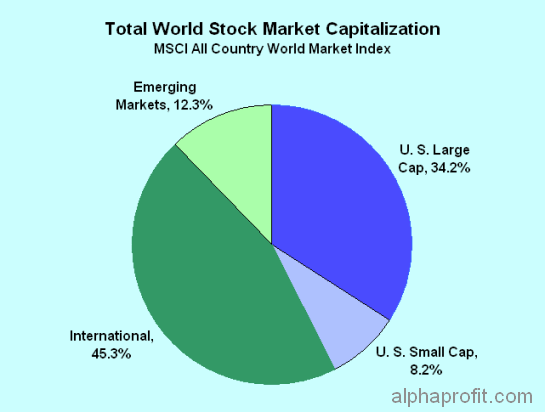‘Don’t put all your eggs in one basket’.
This is commonly believed to be a sound investing maxim. Why?
Because diversification helps investors to lower risk and to stay on course towards their goals without being derailed by market sell-offs.
So, how does one build a diversified portfolio?
Investors can build a diversified portfolio by bringing together assets that do not move in tandem. Diversified portfolios to suit different investment objectives, risk tolerances, and investment time horizons can be constructed by using low-cost, broadly diversified exchange-traded funds (ETFs) in each asset class.
Here are the best ETFs in key asset classes that can help in building diversified portfolios to meet most investment objectives.
1. Large Cap ETF
With U. S. being the world’s largest economy, large cap stocks here are a ‘de facto’ core holding for most investors. The S&P 500 index is a commonly used benchmark for large cap U. S. stocks.
Best large cap ETF: SPDR S&P 500 ETF (SPY)
2. Small Cap ETF
Offering higher growth prospects and carrying higher risk, small cap stocks often behave differently from large cap stocks. Ibbottson & Associates show long-term annual returns from small cap stocks exceed those from large caps by over 2.2%.
Best Small Cap ETF: iShares Russell 2000 Index ETF (IWM)
3. International ETF
Investments in developed economies of Europe, Australasia, and the Far East can deliver stronger returns even when the U. S. market is lacking luster. Such investments also offer investors the opportunity to profit from a declining U. S. dollar.
Best International ETF: iShares MSCI EAFE Index ETF (EFA)
4. Emerging Markets ETF
Although relatively small in stock market capitalization, emerging economies particularly in Asia and Latin America are major contributors to global economic growth. Emerging market investments offer potential for higher returns while being highly volatile.
Best Emerging Markets ETF: iShares MSCI Emerging Markets ETF (EEM)
5. Bond ETF
Bond investments are often less volatile than stock investments. High quality bonds can provide stability to portfolios during difficult economic times and lower portfolio risk.
Best Bond ETF: iShares Barclays Aggregate Bond ETF (AGG)
6. REIT ETF
Even though the 2008 credit crisis has tarnished the investment appeal of real estate investment trusts (REITs), they make sense in most portfolios. REITs provide worthwhile current income and diversification.
Best REIT ETF: Vanguard REIT ETF (VNQ)
7. Commodity ETF
Investments in commodities help investors preserve purchasing power. Investors can either invest in a broad commodity basket or in a specific commodity like gold favored as a safe-haven and inflation hedge.
Best Commodity ETFs: PowerShares DB Commodity Index Tracking Fund (DBC) and SPDR Gold Shares (GLD)
8. Money Market Fund
It often makes sense to have a portion of one’s portfolio in cash-equivalents such as money market funds. The cash cushion not only stabilizes the portfolio against rough weather but also helps to take advantage of market declines.
Key Points
Investors can meet different investment objectives by appropriately allocating monies to the best ETFs in different asset classes. Investors need to periodically re-balance the ETF portfolio to ensure asset allocations are consistent with their current financial situation.

 Sick buying high & selling low? Fed up of the fees you pay? Tired researching investments? End your financial pain now. You have the opportunity to
Sick buying high & selling low? Fed up of the fees you pay? Tired researching investments? End your financial pain now. You have the opportunity to 


 DEC. 1993 to DEC. 2023
DEC. 1993 to DEC. 2023





